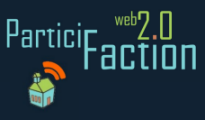Wednesday, May 19, 2010
Sunday, May 2, 2010
Death by Powerpoint
Robin Harris's article "Death by Powerpoint" is worth a read, especially if you've ever sat through an uninspiring meeting full of endless slides and bulleted points. Aside from blaming the software for everything from vague military initiatives in Iraq to space shuttle disasters, Harris briefly hits on (well, glazes over...) an important, lousy feature of presentation software: it is for presenting.
Powerpoint (and all like brands of presentation software) is designed for the one-way flow (from the top down) of highly condensed & structured information: it is about hirearchy & control, not about feedback & free exchange of ideas. Presentation software is all about the presenter, not the audience. While there may be times when this format is warranted, presentation software is, generally, overused -- or, rather, used in contexts where another, more interactive method of relaying information would be more productive in terms of audience reception.
Powerpoint is a lot like Web 1.0: all about the one-way flow of information. While that may have been sufficient (Harris would say "No!") when technology offered no alternatives, we now live in a Web 2.0 world. Today's audience (rightfully) expects to be able to discuss & give feedback on information as it is being presented to them; they need to mash it up and make it their own, and this is to the benefit of presenter and audience alike. There are many better ways to present these days than presentation software: even the mere creation of a web site (that can be dynamically marked up and shared) instead of a set of Powerpoint slides is favourable.
The next time you sit down to use traditional presentation software, consider your Web 2.0 options, and the comparative benefits they yield.
Googe Apps for Education: "The Catch"
As a recent Mashable article notes, more and more schools (and school boards) are turning to Google Apps, and saving -- in some cases -- tens of thousands of dollars by doing so. Google offers a lot of great Web 2.0 stuff, but Henry Thiele, IT director for Education District 207 in Oregon may be a little off the mark when he says that “There is no catch.”
Potential problems in making Google your suite for all apps in an educational setting range from potential informational privacy issues to lack of cloud-based computing data control & backup. Then there's the ethical issue of forcing staff and students to use a service that data mines all of their everything, and mandating that they be subjected to targeted advertising.
Many people (myself included) happily & willingly use a lot of Google services, but not all do so from an informed perspective; I hope that the teachers and learners in mandated "Google School Districts" are informed.
What Thiele (and everyone) needs to know is that "the catch" is a trade-off between costly software licenses and privacy/security. I'm not saying that Google Apps should not be used, but rather that all users should be aware of what Google is doing with their information before they use the Apps. Schools & boards need to teach the big picture, and carefully consider the catch, before they mandate use of Google apps for all students & staff.
Subscribe to:
Comments (Atom)



